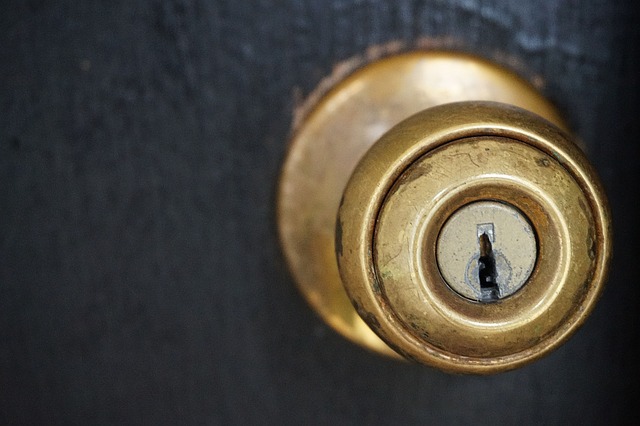Automatic door systems have transformed entry points across various settings, offering swing, sliding, and folding options for enhanced accessibility, security, energy efficiency, and modern aesthetic appeal. Installation requires differentiating between commercial and residential spaces, adhering to safety standards, precise measurements, manufacturer guidelines, and local building codes. Post-installation checks ensure compliance and prevent accidents. Regular maintenance, including cleaning, inspection, and lubrication, is vital for optimal performance and longevity. Annual professional inspections are recommended for all automatic door systems.
“Elevate your spaces with professional automatic door systems—a seamless blend of convenience and security. This comprehensive guide explores the art of installing these advanced mechanisms across diverse environments, from bustling commercial hubs to tranquil residential areas. Discover the intricacies of different types, unlock planning strategies tailored for each setting, and master the step-by-step installation process. Furthermore, learn how to navigate safety regulations, ensure optimal performance through maintenance, and preserve your investment for years to come.”
Understanding Automatic Door Systems: Types and Benefits
Automatic door systems have revolutionized entry points in various settings, from commercial offices and retail stores to residential homes and high-traffic public spaces. Understanding the types and benefits of these systems is key when considering their professional installation.
There are primarily three main types: swing doors, sliding doors, and folding doors. Swing automatic doors are common in many commercial buildings, providing a sleek and efficient entry solution. Sliding automatic doors, often seen in glass structures, offer unobstructed views and seamless movement. Folding automatic doors, versatile and compact, are ideal for narrow spaces and high-traffic areas like airports or hotels. Each type offers unique advantages, catering to specific needs. Benefits include enhanced accessibility, improved security, increased energy efficiency through reduced air leakage, and a modern aesthetic appeal that boosts property values. Efficient automatic door installation requires professional expertise to ensure safety standards, smooth operation, and tailored solutions for different environments.
Planning for Installation: Commercial vs. Residential Spaces
When planning for automatic door installation, understanding the key differences between commercial and residential spaces is essential. Commercial installations often involve larger, high-traffic areas like shopping malls, offices, or public buildings. In such cases, the focus should be on systems that can handle heavy usage while ensuring quick operation times and enhanced security features. Automated doors in these settings must also comply with local building codes and safety standards to accommodate wheelchair access, fire exit requirements, and noise pollution control.
Residential automatic door installations, on the other hand, tend to cater to smaller spaces like homes or apartments. Here, aesthetics play a significant role, with homeowners often seeking doors that complement their property’s style while adding convenience. Unlike commercial settings, residential doors may have less stringent safety regulations but still need to be reliable and weatherproof. Moreover, residential installations might require more customization to fit unique door sizes and opening mechanisms.
The Installation Process: Step-by-Step Guide and Best Practices
The Installation Process: A Step-by-Step Guide to Seamless Automatic Door Setup
The journey towards a smoothly operating automatic door system begins with meticulous planning and expert execution. Installation professionals start by conducting a thorough site assessment, considering factors like door size, opening frequency, and environmental conditions to select the most suitable automatic door model. This is followed by precise measurement and layout planning to ensure the door fits perfectly.
The actual installation involves several key steps: preparing the door frame, installing the motor and drive system, integrating sensors and controls for safe operation, and fine-tuning the mechanism for optimal performance. Adhering to manufacturer guidelines and industry best practices is paramount to guarantee safety, durability, and seamless functionality. Proper wiring, grounding, and safety device calibration are non-negotiable aspects of the process, ensuring the automatic door operates smoothly and securely for years to come.
Ensuring Safety and Compliance: Regulations and Post-Installation Checks
When it comes to automatic door systems, safety is paramount. Professional installers must adhere to strict regulations and industry standards to ensure the doors function properly and protect users. This includes adhering to local building codes, which often dictate specific requirements for door speed, operation mechanisms, and emergency exit provisions.
Post-installation checks are crucial to verify compliance and guarantee safe operation. These assessments involve testing the door’s sensitivity, ensuring it opens and closes smoothly, and confirming proper alignment. Additionally, checking the functionality of safety sensors, emergency stops, and any interlock systems is essential to prevent accidents and ensure compliance with health and safety regulations for automatic door installation.
Maintenance and Longevity: Tips for Optimal Performance
Proper maintenance is key to ensuring your automatic door system provides optimal performance and longevity, especially in high-traffic areas. Regular cleaning and inspection are essential practices that should be incorporated into your facility management routine. Check for any signs of wear or damage, particularly around the tracks, sensors, and drive mechanisms. Lubrication of moving parts can prevent stiffening and reduce noise levels. It’s also crucial to keep the door’s sensors clear of obstructions to maintain seamless operation.
For commercial and residential automatic doors, a recommended maintenance schedule includes annual professional inspections. These thorough checks can identify potential issues before they become major problems. By addressing maintenance needs promptly, you’ll extend the life of your automatic door system, ensuring it continues to provide safe and efficient entry for years to come. Regular care also contributes to the overall energy efficiency of the door, as well as enhancing its aesthetic appeal.
Automatic door systems have revolutionized access control, enhancing security and convenience across various settings. From commercial buildings to residential homes and high-traffic areas, professional installation is key to unlocking these systems’ full potential. By understanding different types, planning for space-specific requirements, following best practices during installation, ensuring safety and regulatory compliance, and implementing proper maintenance routines, property owners and managers can enjoy efficient, reliable, and safe automatic door operations for years to come, ultimately enhancing the overall functionality and appeal of their spaces.
